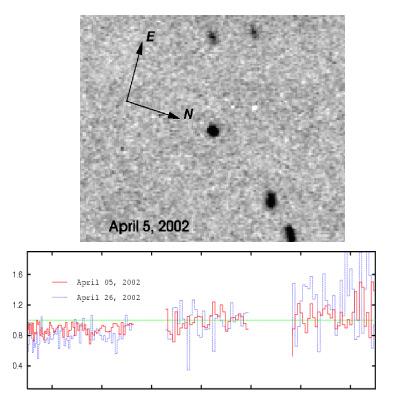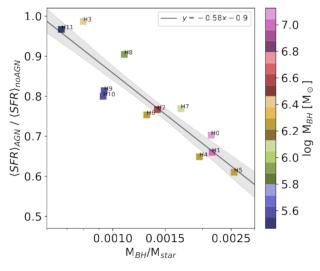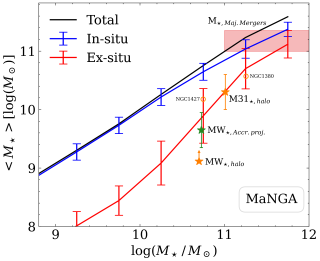Image of the comet 124P/Mrkos (up) and spectra (down) obtained in the near IR using the NICS spectrograph at the Telescopio Nazionale Galileo, Observatorio del Roque de los Muchachos (ORM).
Advertised on
References
A&A 398, L45-L48 (2003)
Observing the nucleus of a comet is difficult, because comets are normally active near the sun which means that their nuclei are hidden by their comae. 124P/Mrkos is a low-activity comet observed at 1.9 UA of the sun. The spectra of comets give us information not only about their composition, but also about the initial composition of the solar system. In this case the spectrum is very similar to that of the D- and P-type
asteroids that typically populate the external part of the asteroid belt.
More info
Near-infrared spectroscopy of the nucleus of comet 124P/Mrkos
Comet nuclei and other related icy minor planets like the trans-neptunian objects (TNOs) and Centaurs are remnant planetesimals from the early solar system formation stages. They probably have the giant planet region and the EdgeworthKuiper belt as a common origin and contain some of the least modified materials remaining from the protosolar nebula. The study of their surface properties is very important from a cosmogonical point of view (Licandro et al. 2002b; Campins & Fernandez 2002), as it could provide important clues to understand the conditions existing at the early stages of the solar system formation. This study also provides information on their composition, on the processes affecting them, and on the conditions prevailing in the regions of the solar system that they occupy.
Year
2003



